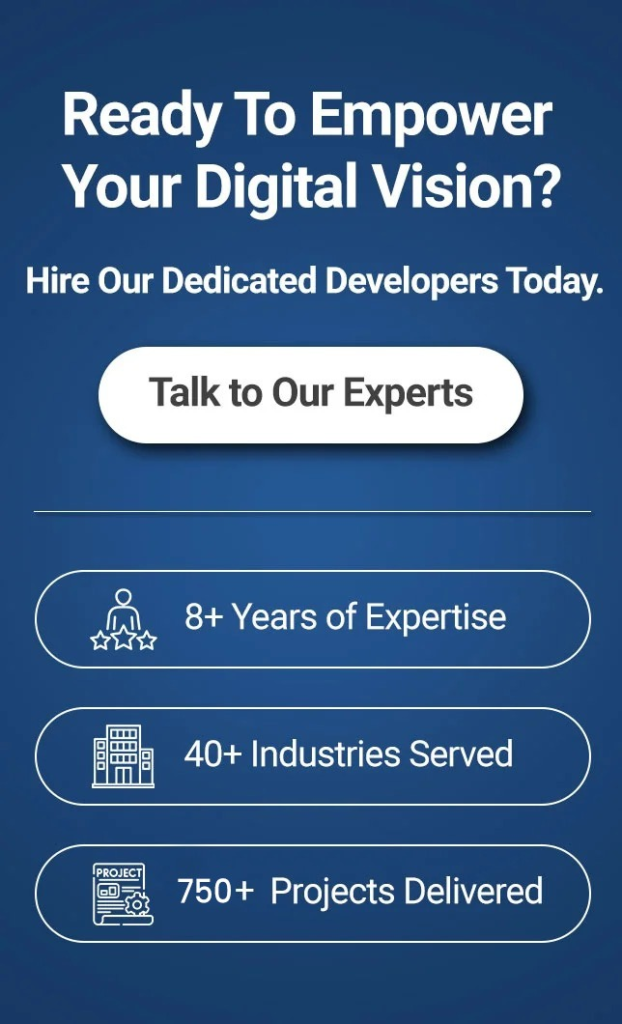The food delivery app industry is enormous!
Did you know?
The entire food delivery app industry is expected to reach a $165 billion market size by 2029. {Source: Business of Apps).
Considering this fact, it’s pretty obvious why every second startup is going crazy over “Food Delivery App Development”.
Wait, but that’s not the only reason behind this craze!
An average American spends $1,850 yearly on food ordered through a food delivery app. (Source: USA Today).
Even though the market is tough with dominant players like UberEats, DoorDash and GrubHub, it’s not stopping startups and even medium-scale businesses to build a food delivery app.
If you want to build a food delivery app like Uber Eats that can reach a wider audience and help you gain a substantial market share, this post has come to the rescue!
Without further ado, let’s dive in!
Table of Contents:
- Food Delivery App Development: How Does it Work?
- Types of Business Models in Food Delivery App Development
- Key Features to Include in Food Delivery App Development
- Step-By-Step Process for On-demand Food Delivery App Development
- How Much Does It Cost to Build a Food Delivery App?
- Frequently Asked Questions
Food Delivery App Development: How Does it Work?
Simply put, a food delivery app development refers to building a food delivery app that allows users to order their favourite meal right to their doorstep.
But if you’ve just entered the market, you must understand it’s working in detail!
Step 1: In the first step, a customer gets recommendations of nearby popular restaurants within a radius of 10 km. Remember that it’s your customers who will perform a series of activities in the app from selecting a restaurant to making the payment.
Step 2: Then, the user can add the food items to the cart and proceed to checkout.
Step 3: Once the user makes the payment, the restaurant gets the order and they start preparing the food.
Step 4: After the food is prepared, the user can easily track the location of the delivery person and get a notification regarding their ETA (Estimated Time of Arrival).
Note: Before you embark on your journey to food delivery mobile app development, always prioritize the interaction between the user and the delivery person.
Types of Business Models in Food Delivery App Development
Now, you know how the food delivery app development works. But have you wondered- What kind of food delivery app model to select? Remember that if you don’t know what your app is all about, you are just aiming an arrow in the dark.
Here are the food delivery app business models to choose from before you begin to build a food delivery app.
- Restaurant-to-Consumer Model
It is a direct business model wherein customers can directly order the food item from the official app of the restaurant. From making an order to doorstep delivery, the restaurant is responsible for all the phases involved in food delivery. Furthermore, the restaurant has a team of delivery agents who deliver food to their customer’s doorstep.
Examples: KFC, Burger King, Domino’s, McDonalds.
- Platforms to Consumer Model
It is the most common and popular business model that has been gaining attention among business owners of all kinds. Under this specific model, it onboards a chain of restaurants on a single platform. From food ordering to delivery, everything is managed by a dedicated food delivery app that you build (if you want to). One of the major highlights of the platform is that it enables you to charge delivery fees and order commissions.
Examples: Uber Eats and DoorDash.
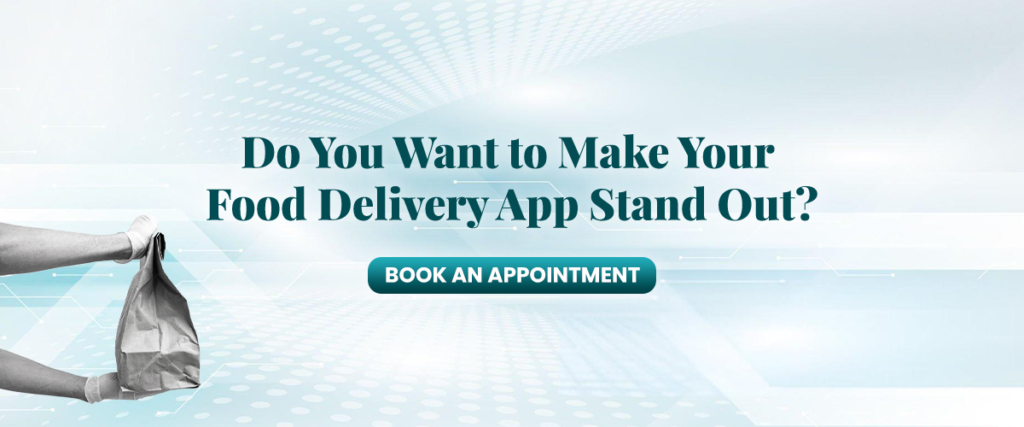
- Food Delivery Aggregator Model
This kind of model is a blend of both business models wherein the restaurant is responsible for delivery services. Let’s say a popular Pizza brand, Domino’s! It efficiently uses food delivery apps to get orders but manages the delivery aspect with its riders. Since customer service is in its hands, the brand guarantees the quick, seamless, and error-free delivery of the products to the customers’ doorstep.
Key Features to Include in Food Delivery App Development
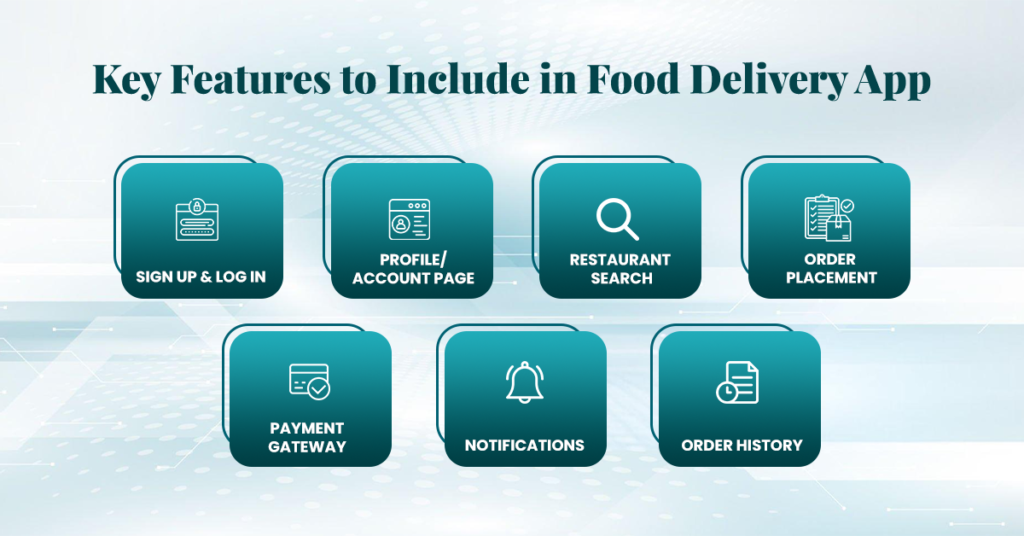
So, you might have an idea of what kind of food delivery app you want to build.
But wait!
How would you ensure your target audience will use your “Food Delivery App”? What features to include in your food delivery mobile app?
Remember that if your app is not fuelled with essential features, it’s of no use. Let’s take a look at the top food delivery app development features.
| List of Features | Details |
| Sign Up & Login | It enables users to create an account on the food delivery app and then sign in whenever they want to explore or make an order. |
| Profile/Account Page | After creating the credentials to access the app, users can then create a profile page and enter their name, address, and mobile number for seamless order delivery. |
| Restaurant Search | This food delivery app development feature enables users to find their favorite restaurants nearby. Try to include additional features like GPS for precise location. |
| Order Placement | It enables customers to select the item and place an order. Ensure you allow users to place multiple orders from different restaurants at once. |
| Payment Gateway | If you want to build a food delivery app, try to integrate multiple payment options, including Apple Pay, Google Pay, PayPal, and others. |
| Notifications | Whenever a user places an order, they should be informed regarding their order details via notifications. Furthermore, you should always stay in your customers’’ minds 24/7 by notifying them about special offers, deals, and loyalty programs. |
| Order History | It might be helpful for users to access the history of all orders they have placed from the moment they downloaded the app. |
Step-By-Step Process for On-demand Food Delivery App Development
Now, that you might be clear about your food delivery app development journey, it’s time to unwrap the best practices to build a food delivery app. Let’s dive in!
Step #1: Understanding the Market
No matter what kind of food delivery app you want to build, conducting market research is incredibly important. What if you eventually build an app that your customers don’t even want? That sounds horrible! Before you embark on your journey to food delivery application development, it’s time to research your market and know what your consumers want, their pinpoints, features they want in an app, their age group, tastes and preferences of a specific area, and more.
Note: To make the most out of your food delivery app development, collect customer behaviour and their order preferences to figure out the features to incorporate.
Step #2: Creating the App Concept & User Journey
Once you know what your users are and what they want, you can then proceed to the concept creation of your food delivery app. In this phase, you should define the app’s core features and functionalities that may help enhance the branding and market presence. When you are building an app, ensure that your user can easily navigate through the app without any difficulty.
Since it’s quite challenging to foster a seamless experience, you can hire a dedicated food delivery app development company in the USA to focus on the UI & UX of the app.
The design should be consistent across all screens and align with the app’s branding and visual identity.
Step #3: Food Delivery App Development
Now, you have designed the UI & UX of your food delivery app, great! Now, it’s time to move to the most challenging part of the food delivery mobile app development which is “Development” itself. In this phase, you need to leverage modern and trending mobile app development frameworks, libraries, and tools to ensure your app is performance-optimized and can load quickly.
If you want to build a food delivery app, start with MVP products. MVP, or Minimal Viable Product, is a prototype of the app infused with minimal features and functionalities, designed to test the market with real users. Based on their feedback, you can further optimize the app and incorporate state-of-the-art features like Push Notifications, Social Integration, Personalization, Multi-Factor Authentication, Navigation, and more.
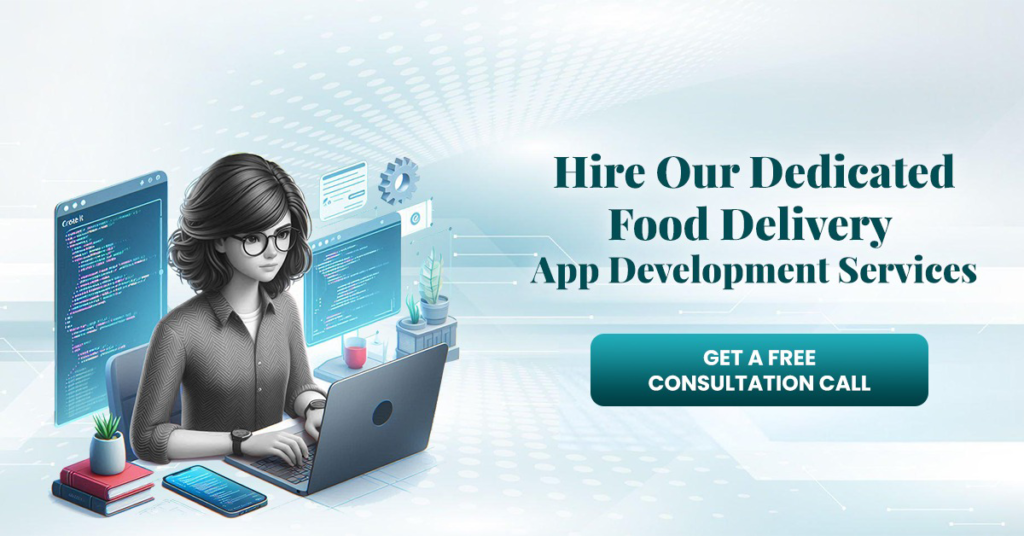
Step #4: Testing the App
Once the food delivery app development is done, it’s time to test the app before its launch. It is an important development phase that helps identify potential errors and bugs and eliminate bugs before they hamper the app’s performance. Remember that testing is a crucial aspect if you don’t have enough expertise, hire a dedicated food delivery app development agency in the USA to test the app across multiple OS (Operating Systems/Devices).
Furthermore, try to conduct user testing to collect feedback on the app’s functionality and user experience.
Step #5: Launching the App
Research is done, development is done, and testing is clear; now, it’s the most exciting part of the food delivery application development process. Remember that the app should be launched with proper planning. If you simply run into launching the app without any backup for immediate assistance, you might run into costly mistakes.
Try to launch your food delivery app in the best possible way to reap maximum benefits.
Step #6: Monitoring & Updating the App
In the final step, you will need to closely monitor and update your food delivery app to check whether it’s working well across all platforms and devices. Most importantly, you should regularly collect your customers’ feedback to identify areas for improvement. Moreover, you should offer regular security updates to your customers to ensure their apps are safe and protected from thefts and cyberattacks.
How Much Does It Cost to Build a Food Delivery App?
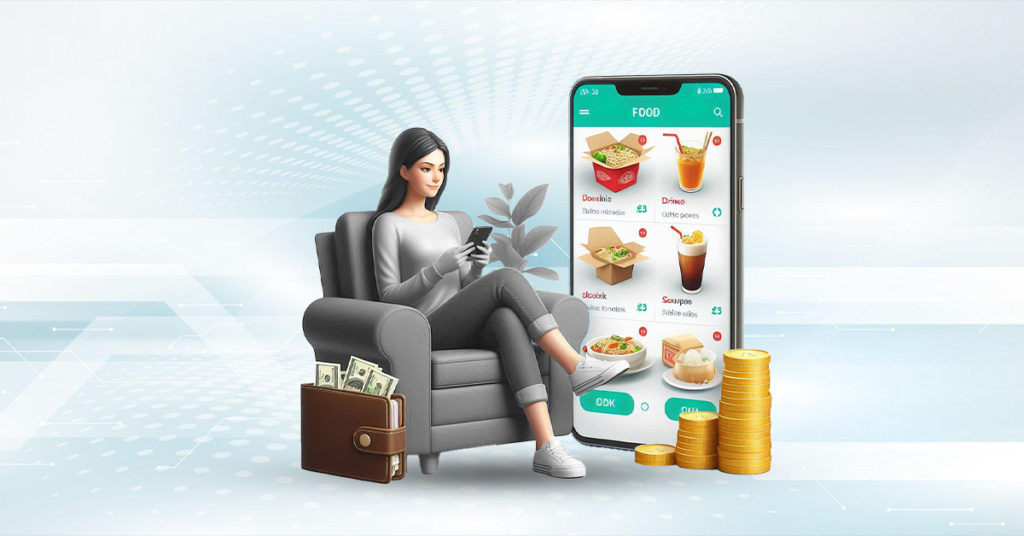
There’s no fixed food delivery app development cost. It depends on a multitude of factors, including features, the complexity of the app, size, technology stack, and number of app developers involved.
Still, on average, if you want to know the development cost of a food delivery app then it may go around from $10,000 to $50,000, depending on the aforementioned factors. Always choose the best food delivery app development company like EitBiz to incorporate basic and advanced functionalities like real-time order tracking, in-app chat support, restaurant management systems, loyalty programs, secured payment gateways, dark mode, and more.
Moreover, hiring the ideal food delivery app development agency in the USA may not only help you build a food delivery app but also keep your cost to a minimum without jeopardizing the app’s quality.
Let’s Turn Your Food Delivery Mobile App Development Idea into Reality with EitBiz
It is no secret that the food delivery app is going to dominate the market in the upcoming years. If you are convinced to build a food delivery app, it’s time to turn your dreams into reality with EitBiz!
At EitBiz, we are a leading mobile app development agency in the USA that has a proven track record of building and deploying 800+ app development projects, tailored to business requirements. We’re proud of our veteran developers along with the use of ultra-modern and relevant tech stack to build on-demand food delivery app development solutions that help you fetch tangible business results.
Ready to start your food delivery app development journey? Contact EitBiz at +1(812)530-6300 or mail us at info@eitbiz.com to discuss you’re the food delivery app development cost today!
Frequently Asked Questions
Q1. How to develop a food delivery app?
When it comes to food delivery app development, simply start researching the market, then define app features (user registration, order management, real-time tracking), design the UI/UX, choose a tech stack, develop the app, test it thoroughly, and finally launch it on relevant platforms.
Q2. How much does it cost to build a food delivery app?
The food delivery app development cost varies depending on features, platforms, and development time, typically ranging from $20,000 to $100,000 or more. Check out our mobile app development cost calculator to find out the estimate to build a food delivery app.
Q3. Which language is best for a food delivery app?
Swift for iOS, Kotlin for Android, and Flutter or React Native for cross-platform are popular choices for food delivery mobile app development.


